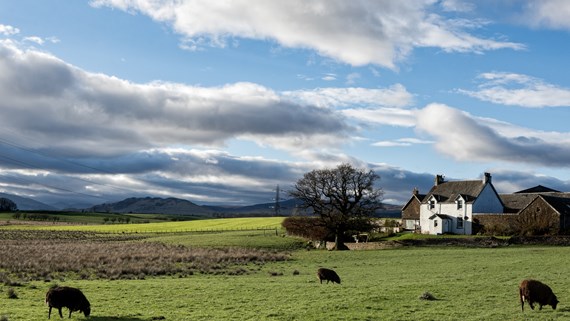Selling the farm: reforms to compulsory purchase of rural land in the Planning and Infrastructure Bill 2025
Insight

There has been widespread coverage of the Planning and Infrastructure Bill 2025 (Bill) in recent weeks, particularly regarding proposed reforms to compulsory purchase powers.
The Bill proposes to make a number of amendments to the compulsory purchase order (CPO) regime, perhaps the most notable of which is amending the rules around section 14A directions under the Acquisition of Land Act 1981. Section 14A directions are the mechanism that allows authorities to disregard any value attributed to the prospect of the land getting planning permission (“hope value”) from the assessment of compensation relating to the open market value of the land being compulsory purchased. The proposed amendments to the rules around section 14A directions would:
- allow authorities to approve their own CPOs that include section 14A directions in certain circumstances (instead of requiring the agreement of national government);
- allow CPOs to be brought on behalf of parish/town or community councils; and
- ensure that section 14A directions removing hope value apply to the assessment of market value of the land taken and also to the assessment of market value relating to home loss, basic loss and occupier’s loss payments.
The Bill also proposes modifying compensation calculation methods for basic loss and occupier’s loss payments.
The Government has countered criticism of these proposed reforms, saying: “Reports misleadingly allege that farmers will be targeted and forced to sell their land for less than their potential value under compulsory purchase reforms.” But what do the reforms mean in practice, and should rural property owners be concerned?
Hope value reforms
The Government claims that by allowing councils to acquire land at existing use value (excluding hope value), it will facilitate the delivery of affordable/social housing (and thereby help the Government meet its housebuilding target). The difference between including and excluding hope value can be significant: according to government statistics from February 2015, the average agricultural land value was £21,000 per hectare, but would be £1.95 million if planning permission for residential use was granted. Not only would councils pay less for the land (if hope value were excluded), but a related benefit, claims the Government, would be that councils would have more left over to fund local infrastructure and thereby help create truly sustainable communities.
The Government has claimed that removing hope value using section 14A directions would “help avoid long disputes with landowners over the amount of compensation payable to eradicate the uncertainty, delay and cost that this can cause for the delivery of benefits in the public interest.” There is, however, a risk that if the proposed changes are enacted, they would disincentivise landowners from bringing sites forward for development, effectively putting the brakes on availability of land for development projects.
The Government is correct that nothing in this proposal directly targets agricultural land, but as rural landowners are perhaps those most likely to own land adjoining existing settlements, containing infrastructure and transport links, it is likely that this land will be attractive to councils looking to build affordable housing. Consequently, rural landowners are at increased risk of being affected by the proposed amendments to CPO compensation rules set out in the Bill.
Basic loss and occupier’s loss payments
Loss payments are an additional amount of compensation (over and above the sum paid for the land) paid to landowners and occupiers, such as tenants, to reflect the inconvenience and disruption caused by compulsory purchase. Loss payments are assessed by taking into account the market value of the person’s interest in the land subject to the compulsory purchase. The Bill proposes changes to Part 1 of the Land Compensation Act 1973 to amend the level of compensation so that those in actual occupation of land are now potentially entitled to more compensation than under the current regime. The calculations for such compensation are extremely complex and subject to strict caps, depending on certain factors, such as the total area being compulsory purchased.
Finally, do not forget that where a government department or a local or public authority is empowered to acquire land (whether by agreement or compulsorily) section 23 of the Compulsory Purchase Act 1965 generally applies. This means that the acquiring authority is obliged to pay the vendor’s legal costs of conveying land, which can include the costs of valuers and negotiation of claims.
Rural landowners should keep an eye on the Government’s proposed reforms and, if they are particularly concerned about prospective compulsory acquisition (where they own land adjoining built-up areas, for example), they would be well-advised to engage early with their legal and property advisers.
This publication is a general summary of the law. It should not replace legal advice tailored to your specific circumstances.
© Farrer & Co LLP, April 2025






